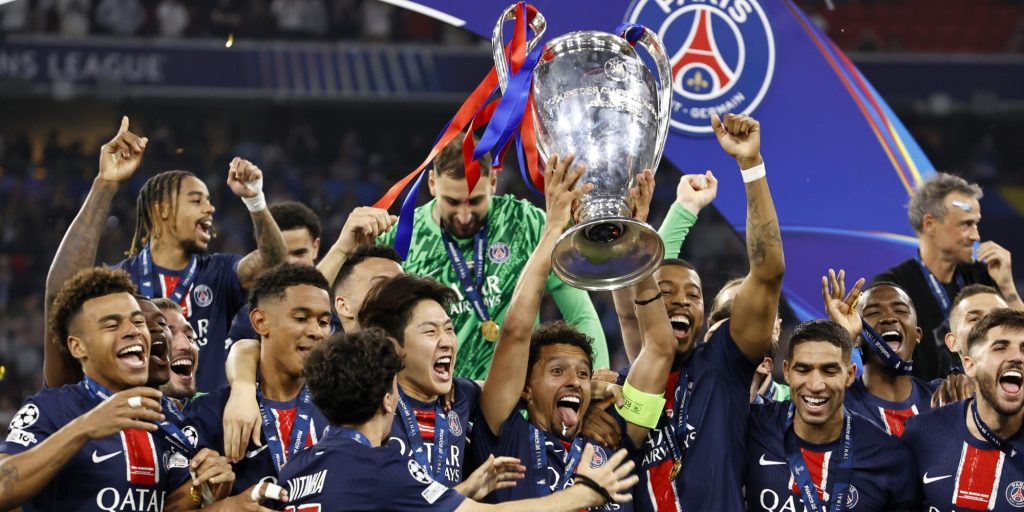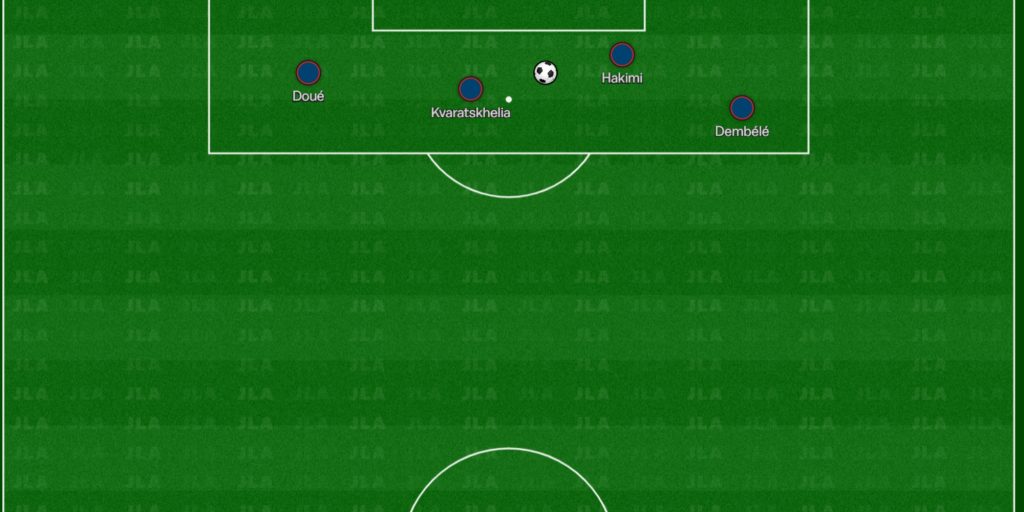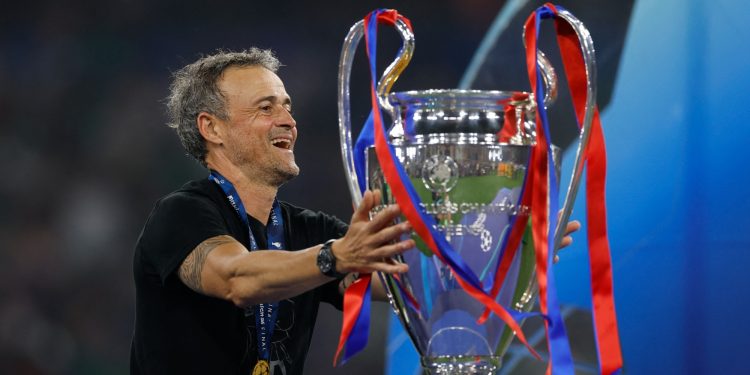Luis Enrique assembled possibly the greatest team in the modern era with his Barcelona side, winning eight out of a possible ten domestic and European trophies. Tactically, you wouldn’t consider the Gijon native as a ‘total football’ coach, as many of his predecessors were at Barcelona. Despite this, his system can be described as positive and entertaining to watch but also arguably more adaptive than the ‘Tika Taka’ system dominated in Spain in the early 2010’s.
At Barcelona, Enrique managed to get MSN (Lionel Messi, Luis Suarez and Neymar) to work in his system, however upon joining PSG in July 2023, he ditched the superstar attack, losing Messi and Neymar as well as Kylian Mbappe the year after, to ensure balance in his system and maximise results. This proved his intelligence as a coach, believing fully in his system and showed he didn’t just rely on individual brilliance.
This idea of bringing in youth and enthusiastic players as opposed to experienced stars is revealed as the average age of the PSG squad in the 2021/2022 season was 26.2 years old, compared to the 2024/2025 season being 23.7 years old.
What system does Luis Enrique use at PSG?
On paper, PSG lineup in a 4-3-3 setup but few modern day systems nowadays actually keep to their lineup shape in and out of possession. The build up phases are usually set up with a back 3, 2 in midfield and 5 in the attacking zones of the pitch.
This setup tends to create a lot of triangles between opposition players, so they can retain possession and progress up the pitch. It is important to note however, it’s not always rigid and players often rotate and move around from these shapes.

“The team started the season with principles that were already well assimilated, and the coach tried to incorporate even more mobility. Today, a n°6 can be an 8, an 8 can be a 10, a 10 can be a 6 and with the forwards, you never know if they’re on the left, the right or in the middle,” PSG’s Portuguese midfielder Vitinha explained in an interview with Rio Ferdinand.
“It’s very difficult for opponents. The coach tried to put that in place and I think that was the key. It’s very difficult for the other teams, whether they press one-on-one or whether they don’t press and choose to stay in a low block”
What are Luis Enrique’s main principles of play?
Positional rotations
At PSG, it is clear when watching them, the rotations his players make through build up phases. You can often see their front 3 rotate sides. (which is often in many modern tactical systems) However, Enrique’s rotations are far more complex than the front men switching. The most notable example of this is midfielder Vitinha dropping left of the defense during build up, letting left back Nuno Mendes; bomb forward out wide or invert into the half space.
These rotations are crucial in getting low block systems to lose their control in blocking spaces. For example with Vitinha dropping back and letting Nuno Mendes bomb on, PSG will have two wide players each side as well as often having numerical advantages in the final third. This means when switching play, wide defenders from back fours or fives find it incredibly difficult to close down their opponent.
Ballon d’Or winner Ousmane Dembele also significantly rotates in this system. Operating in the number 9 role, he can be often seen dropping deep, roaming left or right along the defensive line. In possession it holds a lot of similarities and traits to the false nine role, which Guardiola and Del Bosque executed to devastating effect in the early 2010s.
Relentless pressing
PSG’s press was arguably the best in Europe last season and it is no coincidence that they ended up champions of Europe. Despite having over 68% average possession in Ligue 1 last season, they still enjoyed the second most possession won in the final third of the pitch at 5.4 per game.
Dembele is the leader of the press and while his goals and assists certainly helped him win the Ballon d’Or; it’s his off the ball work that has drastically improved since Enrique’s arrival in Paris, that has finally led him to reach his potential in his late twenties.
Enrique’s team press smartly, especially when trying to close down a keeper or defense. This forces most opposition to go long, where PSG’s defense is especially strong at cleaning up.
- Read also: PSG awarded 2025 Men’s Team of the Year
The 2025 Champions League final as an example of the Luis Enrique style
The biggest club game in football is the perfect example of PSG’s dominant system under Enrique in action.
Firstly the opening goal perfectly illustrates the positional rotations of his players. The freeze frame before the goal shows striker Dembele on the right, right back Hakimi on the six yard box, left winger Kvaratskhelia in the centre and right winger Doue on the left.

Additionally in the first half, Inter sat in a 5-3-2 low block. Every time they had possession, the press from PSG was evident, Dembele especially closing down the keeper Yann Sommer, who was forced to go long into their front two. PSG’s defense did an excellent job regaining possession from the long balls.
When Inter decided to step up their line in the second half in order to try to get back in the match, we saw the devastating speed of PSG’s attack. Doue’s second of the night and PSG’s 3rd is a perfect example of this. Dembele forcing Acerbi up from his defensive line, leading Doue to exploit huge space.
PSG are an opposition manager’s nightmare. Deciding to sit deep or stepping up high can both lead to devastating results to your team when they are fully on it. The early season injury crisis has certainly stumbled progress of Enrique’s well oiled machine. There is no question however that Luis Enrique is a football genius.


